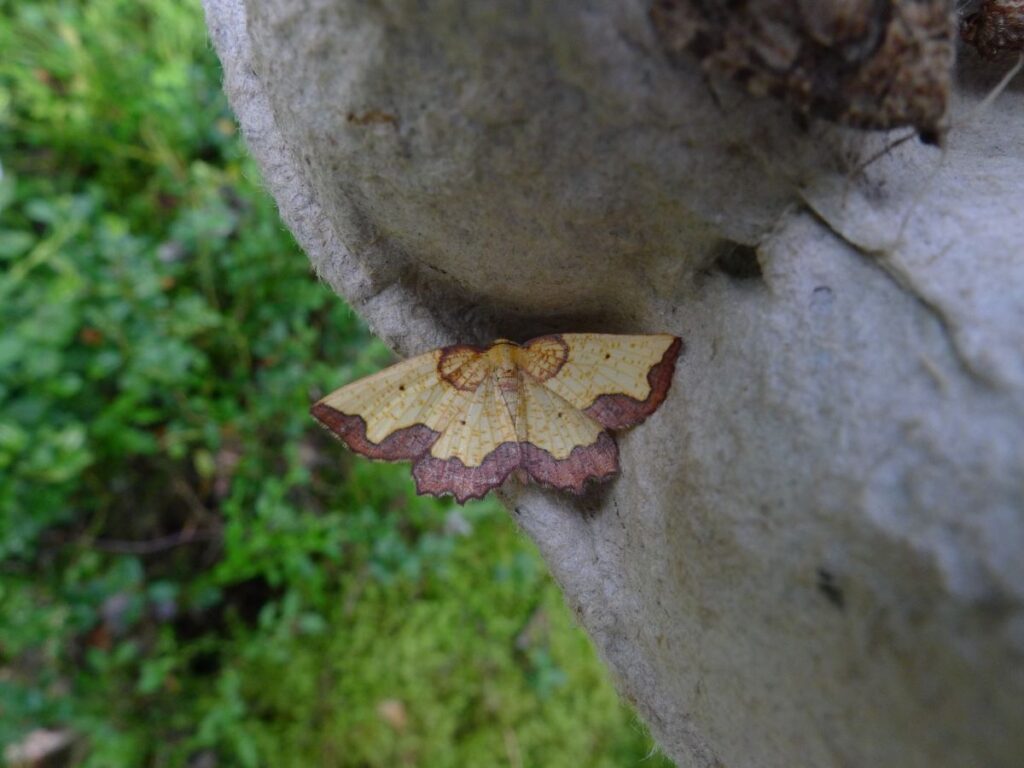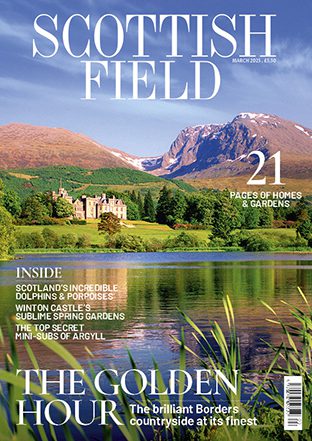
Record numbers of rare moth recorded at Scottish nature reserve
Record numbers of one of the UK’s rarest species of moth have been recorded at a nature reserve in Scotland.
The Dark Bordered Beauty moth can be found in only a few places in Scotland and just one location in England.
The loss of native woodland, increased pressure from grazers, and a lack of diversity in forests has severely impacted the species’ numbers.
Yet RSPB Scotland’s Insh Marshes nature reserve has reported its best ever year for Dark Bordered Beauty moths, with more than twice as many moths caught than during any previous monitoring season.
‘Intensive monitoring is undertaken for a month during each Dark Bordered Beauty flying season, using moth traps in different areas of the aspen woodland through the night,’ said Julie Ellis, an RSPB warden at Insh Marshes nature reserve.
‘The moths are identified, counted and released in the morning.
‘The effort involved for one person to undertake this monitoring for an entire month, during Scottish summer daylight hours, cannot be over-estimated.’
The rare moths are usually associated with aspen woodland in Scotland, which has declined as a result of deforestation and overgrazing.
Aspens rarely flower or set seed in Scotland and instead rely upon suckering from tree roots to spread.
These suckers act as the primary source of food for Dark Bordered Beauty moth caterpillars at Insh Marshes.
Mick A’Court has been monitoring the moths, following efforts by RSPB Scotland to create more favourable habitat for the species.
‘The monitoring involves running 125-watt MV Robinson type moth traps each night over 18 specific locations where aspen suckers occur, which provide a food source for the moth’s larvae,’ he said.
‘Each location is trapped at least twice in the four-week period between mid-July to mid-August, which is the moth’s main flight period.
‘The traps are powered by portable generators and are set up just before dusk and then the generators started at around 22:30. The traps are left overnight and are visited at dawn, around 04:30.
‘All moths in and around the trap are identified, counted and recorded before being released in suitable nearby vegetation where they can rest out of sight during the day.’
Mick trapped a total of 12,058 moths of 212 species over the four week monitoring period.
While sightings of Dark Bordered Beauty moths started off slow they soon ramped up to never-before-seen quantities.
‘The first few trapping sessions produced counts of either zero or very few Dark Bordered Beauty moths,’ he said.
‘On the night of 5 August it had rained at first and then the temperature dropped from 13°C to 8°C, so I wasn’t expecting to find much in the traps.
‘So, it was astonishing to find 33 males and one female in a single trap. This is far in excess of anything caught in a single trap before.
‘The previous year, when 13 were caught in one trap, this was considered to be a very good catch.
‘Quite why this apparent irruption in numbers occurred at what is thought to be the end of the flight season for the moths is unclear, but it does demonstrate that there is a good population at Insh Marshes.’
Read more Wildlife stories here.
Subscribe to read the latest issue of Scottish Field.
TAGS

